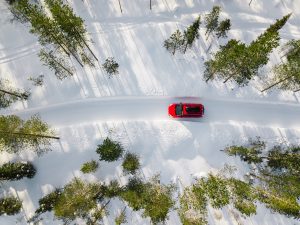Vintage cars - Valuable tips for the right winter storage
The dark season is beginning and slowly it is getting uncomfortable on the streets. The winter tire change is due soon, it's getting cold and the danger of frost and snow is gradually increasing. The last big rallies were driven at the end of September and it's time to send your favorite piece to hibernation without any worries so that you can enjoy it again in spring.
We give you a few tips for this:
- When the weather invites you to do so for the last time, the classic car should be brought up to operating temperature again. In this way, the drive and chassis are warmed up again so that no condensation remains in the exhaust system during the long downtime.
- The tire pressure should be increased by about 30% (to about 3.5 bar), otherwise the weight of the car would cause a flat tire if it was parked for a longer period of time. To help, you should push the cart back and forth from time to time. However, it is even better to jack up the car to ensure that the tires are permanently relieved.
- On the last jaunt you should take the opportunity to drive to a gas station and fill up the car there. Otherwise there is a risk of condensation forming and the tank rusting as air could remain in the tank.
- Thorough cleaning on the outside (preferably by hand washing) is essential to protect the paintwork during hibernation. You should meticulously clean corners, joints, door edges, wheel arches, etc., because every remaining dirt particle acts like sandpaper on the paintwork. But the interior should not be neglected either. Clean the leather seats and cockpit with special care products and vacuum the car thoroughly. The car must then dry well, because moisture leads to the formation of mold and rust. The side windows remain open for this purpose. In convertibles, special attention is paid to the soft top when it is cleaned. Wash this thoroughly with soapy water and then leave it slightly open. Lubricate hinges with oil or grease, seals and rubbers with Vaseline.
- The battery is disconnected or removed and connected to a trickle charger. Anyone who does not have this must recharge or recharge the battery at regular intervals (approx. every 2 months) in order not to damage the battery.
- The engine oil should be changed as used oil promotes corrosion. Please fill up the antifreeze for the engine and the windscreen washer system before the winter, this protects against freezing.
- The classic car should then be parked in an air-conditioned room with a constant temperature and humidity to prevent condensation and thus mold and rust. A ventilated garage offers a good alternative here! Then a tarpaulin is pulled over it, ideally made of cotton, so that air is permeable and the paintwork is not scratched.




